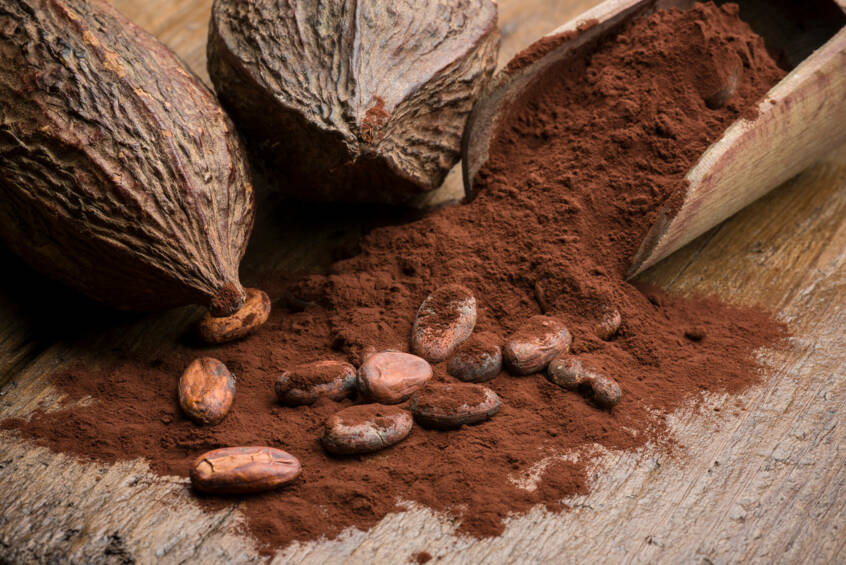After reaching an all-time high in April (USD 10,000/ton), a far cry from the highs of 2009 and 2011 (USD 3,700/t), cocoa prices fell back to USD 7,000/t once the Easter celebrations were over. However, they remain three times higher than a year ago, and are set to stay there. The rise in cocoa bean prices, which can be partly explained by a frenzy of speculation on the markets, also reflects a shortage of supply, which is problematic in the medium term.
The small number of producing countries makes supply highly vulnerable
Four countries account for 75% of the world's cocoa bean production, over 60% of which is in West Africa, making it vulnerable to economic and weather shocks.
World cocoa bean production is set to fall by 11% by 2024
There are many reasons for this. Weather phenomena (particularly El Niño), the widespread cultivation of cocoa in full sun (a source of deforestation) and the increased frequency of harvests have encouraged the development of parasites and diseases, requiring chemical treatments that impoverish the soil. The ageing of plantations and their partial non-renewal (linked to the fall in producers' incomes) have also had an impact on production, with cocoa yields starting to decline after 15 years.
A highly concentrated industry
Four companies alone hold almost two-thirds of the world's grinding capacity, and ten companies, all in advanced economies, share more than 40% of the retail confectionery market. This hyper-concentration makes it virtually impossible for credible new manufacturers to emerge, given the colossal entry costs required to develop a sufficiently large crushing and processing infrastructure.
Demand continues to grow...
Over the last 40 years, demand has tripled, mainly driven by Europe and North America. By 2023/2024, 4.8 million tonnes of cocoa will be consumed worldwide (90% in the form of chocolate).
With 9 countries in the top 10, Europe is the world's leading chocolate consumer, accounting for almost 50% of demand.
...and prices set to continue rising
In the absence of any corrective signs, cocoa bean prices are likely to remain very high in the medium term. While global demand will reach 4.8 million tonnes this year, supply is unlikely to exceed 4.5 million, mainly because the two main cocoa-producing countries - Côte d'Ivoire and Ghana (3.3 million tonnes of cocoa beans in 2022, i.e. 58% of global production) - are unable to significantly increase their production levels.
Long-term environmental impact
The life cycle of a cocoa plantation is 25 to 30 years. In detail, crops reach their peak productivity after 5 years, then start to decline after 15 years, falling below the break-even point in the last 10 to 15 years.
At this point, farmers have several choices:
- continue with a much lower income
- renew the plants (and therefore go without a harvest for the next 5 years)
- cultivate new land and/or convert these crops to palm or rubber trees.
The relocation of cocoa cultivation de facto leads to the clearing (and hence deforestation) of virgin areas in order to benefit from the "forest rent" to finance the industry. Despite increasingly strict forest protection rules, the increase in production needs is likely to lead to an expansion of cultivated land and therefore an increase in deforestation, a process exacerbated by the difficulty of tracing cocoa products beyond the grinding stage.




